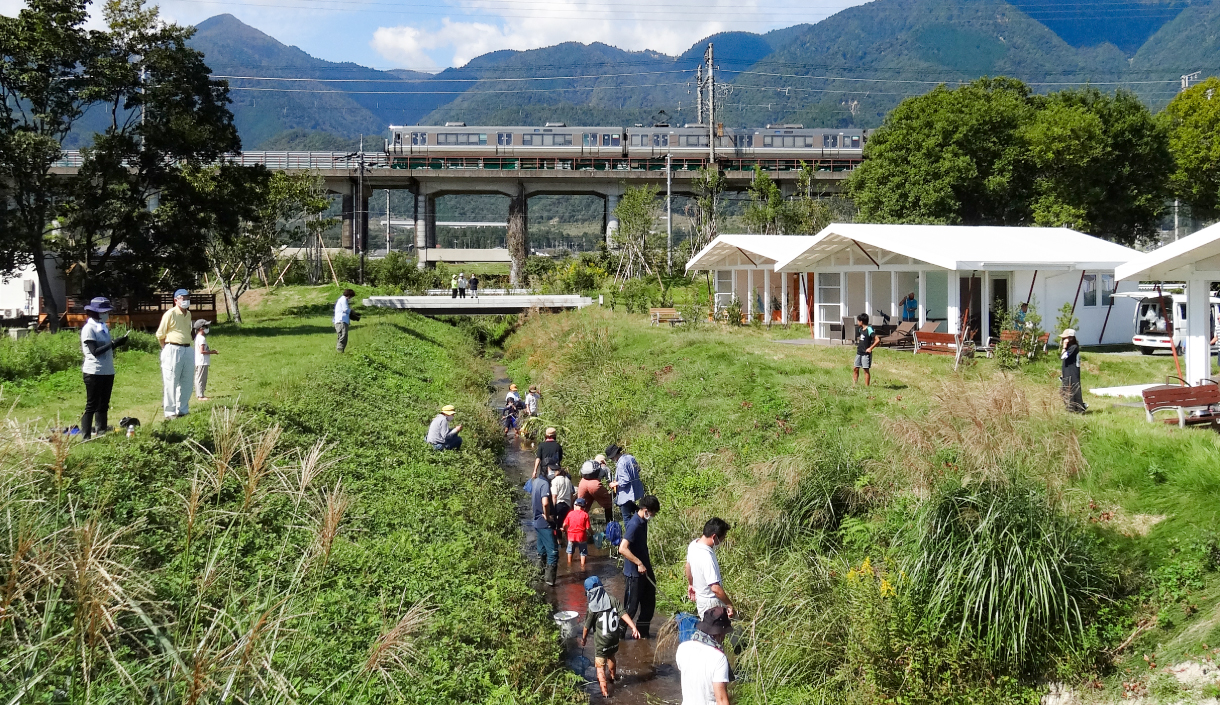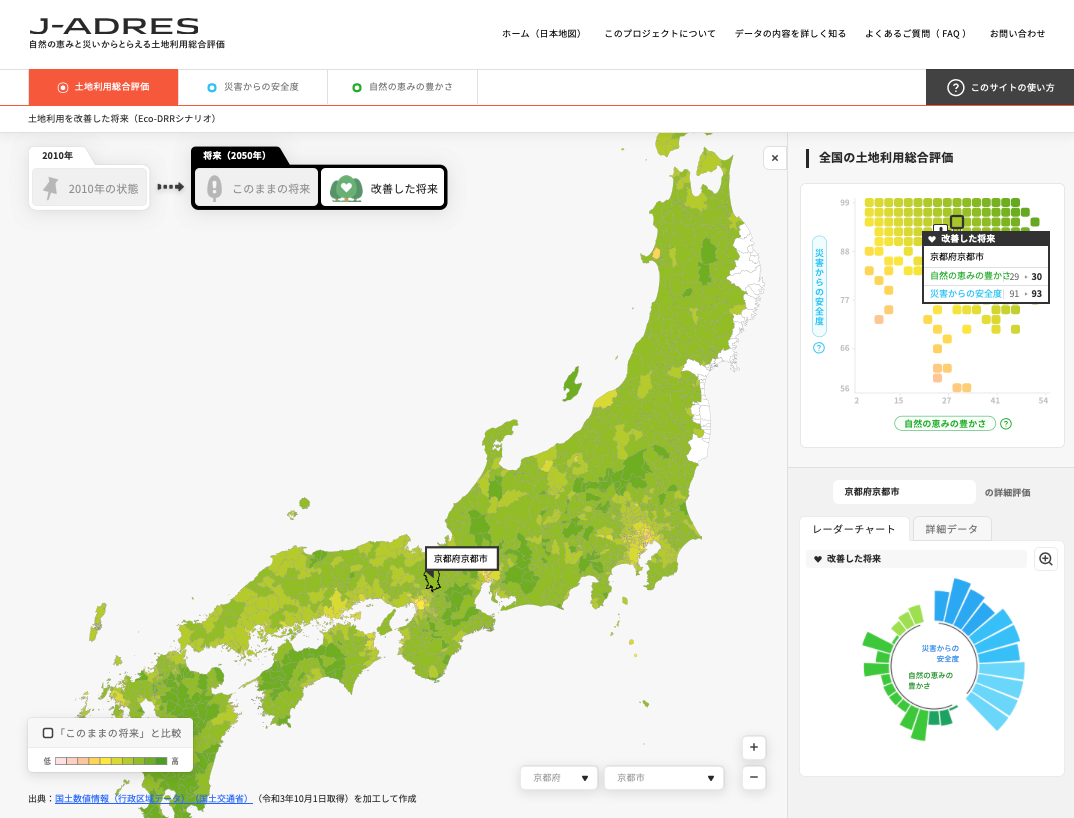
Fisical Year Completed
2022
Eco-DRR Project
- Related links
Research and Social Implementation of Ecosystem-based Disaster Risk Reduction as Climate Change Adaptation in Shrinking Societies
Abstract
What have we learned and to what extent?
We evaluated current land use from the perspective of socioeconomic risks of disasters and ecosystem services provided by nature, and conducted scenario analysis for a future with a declining population. The Business as Usual (BAU) scenario is a future scenario in which land use and population distribution will continue to change in the future, and the Eco-DRR scenario is the one in which disaster risks are avoided and ecosystem services provided by nature are actively utilized through the wise use of land. Compared to the BAU scenario, the Eco-DRR scenario reduced disaster risks in most municipalities, but the degree of reduction varied greatly from municipality to municipality.
On the other hand, for ecosystem services, the relationship between the two scenarios differed depending on the type of provisioning, regulating and cultural ecosystem services. Municipalities that seize the opportunity of population decline to avoid exposure to disaster hazards are expected to benefit greatly from improved land use, which will reduce disaster risk and improve ecosystem services. These results are published on the J-ADRES “Japan’s Assessment of land use based on Disaster Risks and Ecosystem Services” website.
 Figure 2 Series “Eco-DRR as Learned from Local History” and “How to get started with Green Infrastructure”
Figure 2 Series “Eco-DRR as Learned from Local History” and “How to get started with Green Infrastructure”
In the study areas of Fukui, Shiga, and Chiba, we have collaborated with a variety of local stakeholders to conduct research on the functional evaluation of Eco-DRR and its local implementation. We have collected examples of traditional disaster response practices that are still active in various parts of Japan, analyzed their significance in modern society, and examined measures for their preservation and utilization in the local area. These results were compiled and published in the booklets of the series “Eco-DRR as Learned from Local History” and the booklet “How to get started with Green Infrastructure.”
We have also been working with international Eco-DRR efforts, and have translated into Japanese and published educational materials and instructors’ manuals for Eco-DRR related educational programs. We hope these materials will be used at Japanese universities and other institutions.
Our concept of global environmental studies
The blessings and disasters brought by nature are deeply connected. The same nature that is all around us not only brings blessings but also disasters. Biodiversity, which brings many blessings, is supported by the workings of nature, which is also the source of disasters. This deep connection between blessings and disasters has long been engraved in the hearts and cultures of local people. Our project has taught us the importance of rethinking the deep connection between nature’s blessings and disasters when responding to natural disasters, which are becoming more severe and more frequent due to climate change.
New connections
- The second version of the J-ADRES “Japan’s Assessment of land use based on Disaster Risks and Ecosystem Services” website (j-adres.chikyu.ac.jp) is now available (Fig. 1).
- All five booklets of the series “Eco-DRR as Learned from Local History” (Japanese and English editions) and a booklet “How to get started with Green Infrastructure” to promote Eco-DRR and local implementation of green infrastructure have been published (Fig. 2). The electronic version is available free of charge on the RIHN website.
- Japanese translations of educational program materials and instructor’s manuals on Eco-DRR are available free of charge on the RIHN website.
News
-
{{ data.disp_date }}
{{ data.content }}
Project Leader
YOSHIDA Takehito
Evaluation by an external evaluation committee
Research schedule
| 2015 | 2016 | 2017 | 2018 | 2019 | 2020 | 2021 | 2022 |
|---|---|---|---|---|---|---|---|
| IS | FS | FS/PR | FR1 | FR2 | FR3 | FR4 | FR5 |
